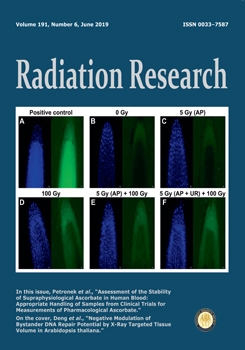Radiation-induced bystander effects (RIBE) entail a cascade of bystander signals produced by the hit cells to the neighboring cells to regulate various biological processes including DNA damage repair. However, there is little clarity regarding the effect of radiation-targeted volume (hit cell amount) on the DNA repair potential of the bystander cells. This is especially important to understand in the context of the whole organism, where the target usually consists of multiple types of cells/tissues. To address this question, model plant Arabidopsis thaliana was locally irradiated, and the DNA repair potential of bystander root-tip cells was assessed based on their radioresistance to subsequent high-dose radiation, i.e. radioadaptive responses (RAR). We found that X-ray irradiation of the aerial parts (AP) of A. thaliana seedlings (5 Gy) initiated RAR in the root-tip cells, which exhibited an alleviated repression of root growth and root cell division, and reduced amount of DNA strand breaks. We also observed an improvement in the repair efficiency of the homologous recombination (HR) and non-homologous end joining (NHEJ) pathways in the bystander root tip cells. We further expanded the X-ray targeted volume to include the aerial parts with upper parts of the primary root and compared it with X-ray irradiated aerial parts alone. Comparative analysis revealed that RAR for these end points either disappeared or decreased; specifically, the repair efficiency of HR was significantly reduced, indicating that radiation-targeted volume negatively modulates the bystander DNA repair potential. In contrast, X-ray irradiation of upper part of the primary root alone did not induce RAR of the root tip cells. Thus, we propose that additional X-ray irradiation of upper part of the primary root reduces the bystander DNA repair potential, possibly by selectively disturbing the transport of bystander signals responsible for HR repair.
How to translate text using browser tools
24 April 2019
Negative Modulation of Bystander DNA Repair Potential by X-Ray Targeted Tissue Volume in Arabidopsis thaliana
Chenguang Deng,
Jingjing Wu,
Ting Wang,
Gaohong Wang,
Lijun Wu,
Yuejin Wu,
Po Bian
ACCESS THE FULL ARTICLE

Radiation Research
Vol. 191 • No. 6
June 2019
Vol. 191 • No. 6
June 2019




